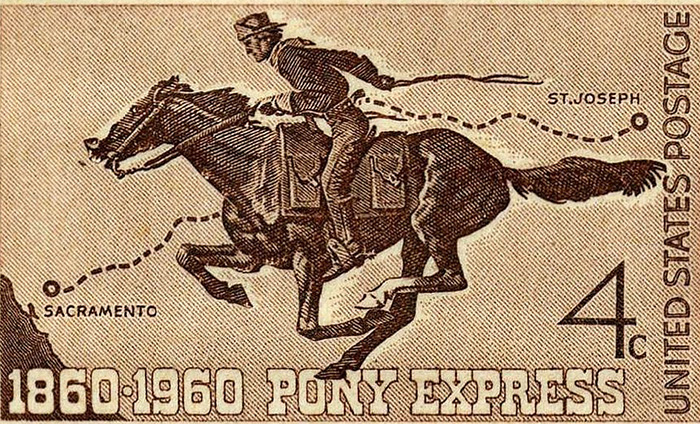
The Pony Express mail delivery system, which used continuous horse-and-rider relays along a 1,800-mile route between St. Joseph, Missouri, and Sacramento, California, was launched in the United States.
The Pony Express, despite its brief existence from April 1860 to October 1861, occupies a legendary status in the narrative of American history.
It initiated its operations on April 3, 1860, with the first mail pouch leaving St. Joseph, Missouri. Remarkably, this inaugural journey culminated on April 14, 1860, when the mail was delivered to San Francisco, a feat accomplished in just under two weeks.
This rapid mail service operated for a mere 18 months, ultimately succumbing to the advent of the telegraph and various operational challenges.
However, the memory of the Pony Express endures, symbolizing a significant achievement in the annals of American mail delivery and embodying the rugged spirit of the Old West.
The need for the Pony Express arose from the exigent demand for efficient communication across the vast expanse of the United States.
Prior to its inception, the delivery of mail was an arduous and time-consuming process, often taking up to three weeks.
The options were limited and cumbersome: one route involved a lengthy and perilous journey by stagecoach, while another necessitated shipping mail to Panama, then across the isthmus by train, followed by another sea voyage to San Francisco.
Against this backdrop, the Pony Express emerged as a groundbreaking solution, drastically reducing the time it took to send messages across the country.
The innovation of the Pony Express lay in its simple yet effective relay system of riders and stations.
Devised by entrepreneurs Alexander Majors, William Russell, and William Waddell, this system relied on a network of stations where riders would exchange exhausted horses for fresh ones, continuing the relay until the mail reached its destination.
Riders, often young and lightweight to maximize speed, would cover approximately 50 miles before handing off to the next rider.
This system ensured that mail could traverse the perilous journey from the Missouri River to the Pacific Coast with unprecedented speed.
However, the Pony Express was not destined to last. The completion of the first transcontinental electric telegraph line in October 1861 rendered the service obsolete, providing an instantaneous method of communication across the continent.
Financial struggles also plagued the Pony Express; it never secured a profitable business model or a government mail contract, suffering substantial losses throughout its operation.
Despite its operational inefficiencies and short lifespan, the closing of the Pony Express marked the end of an era in American history.









